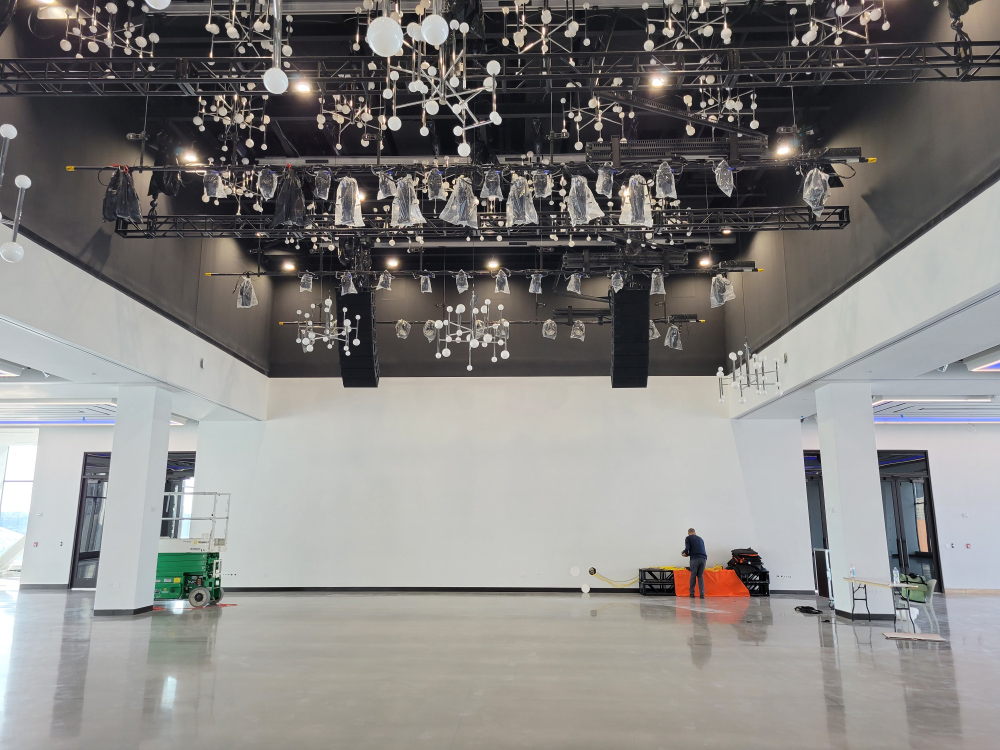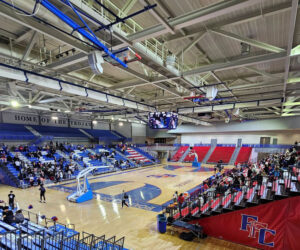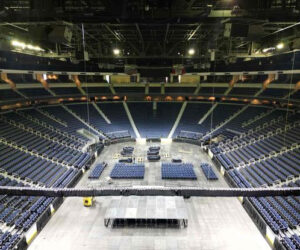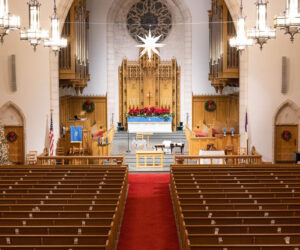The Glasshouse, a new multi-function, interconnectable event space in New York City offering 360-degree views over the Hudson River and the Manhattan Skyline, has been equipped with a production infrastructure that includes an audio component utilizing Martin Audio loudspeakers.
Audible Difference (ADI) of Brooklyn served as the systems integrator for the venue, which is able to accommodate almost 2,000 people and also includes multiple outdoor terraces set within a 75,000-square-foot footprint. “We were offered the contract based on our design and the fact that Martin Audio offered a robust and adaptable Dante platform,” states ADI principal Erich Bechtel.
Consequently, the stage area pop-up space, taking advantage of extra ceiling height on the 7th floor, comprises two hangs of eight Martin MLA Compact while LF extension is provided by eight DSX-F subwoofers, four per side, which can be deployed as necessary. Bechtel’s colleague Ian Ruben-Schnirman, ADI’s director of technical services, was responsible for overseeing the fit-out of this former warehouse building. The Glasshouse itself occupies the 5th floor and the 6th (the event space, VIP rooms and kitchen), which are new additions to the building.

He notes that the high ceilings, concrete base construction and heavily glazed superstructure were likely to generate reflections. To deliver an adaptable space suitable for private hire, live events, party planners, weddings and so on ADI needed to create an environment which could be reconfigured “in a virtually infinite number of ways, with recallable presets, enabling them to change events faster.”
About the company’s decision to adopt the MLA platform, Ruben-Schnirman explains, “MLA makes sense here because of the optimization potential; we could avoid hitting glass, and at the same time could steer the sound and achieve total rear rejection.” He also points to MLA’s consistent coverage: “This was especially important in a space like this which is essentially a large concrete box. Wherever the sound is arrayed, you hear no difference whatsoever. I don’t think any other system would have worked.”
The ability to control the audio within the wider space with a distributed audio system was paramount, he adds, but ceiling loudspeakers presented limitation. “So we moved them up to CDD-LIVE 8 and ran everything over Dante,” he says. “By keeping the sound digital we managed to avoid thousands of feet of cable.”
With the spec agreed, the integrators were able to test every loudspeaker quickly via an AC power line, even before the main power cables were in. “One of the features [of CDD-LIVE 8] is the large LED indicator light on the front of the cabinet under the grille,” Ruben-Schnirman says. “When you have 63 boxes up in the air you can turn these lights on, and it makes trouble shooting much easier.”
The 63 white CDD-LIVE 8 mounted in the ceiling as a distributed system are complemented by a further 12 black CDD-LIVE 8 variously detailed for front fill duties, deployment on the terraces and as compact stage monitors. Four SXP118 subwoofers provide LF extension.
Another key component was the control element via Dante, with ADI turning to Martin Audio’s proprietary DX4.0 network system controller, to handle most of the tuning and U-Hub to feed digital audio to the MLA array via a single cable. “This enables the hangs to remain isolated when we move equipment around the room, allowing for the variability of the space.” Furman power conditioning and rack supply, offering cable routing panels with integrated D-ring, kept the installation neat and allowed all four racks housing the DX4.0 and U-Hub to be flown. “This was important as it offers maximum flexibility as the rooms change.” Room combining is via a third-party device.
With the intervention of COVID, the contract was drawn out over 18 months, eventually completing this past September. The integrators were supported by Martin Audio product support engineer Joe Lima. “Joe was invaluable,” says Ruben-Schnirman. “He looked over the design remotely, and he and I did the system teching.” Another key member of Martin Audio’s U.S. team was northeastern regional sales manager Martha Callaghan, who campaigned to help secure the contract and support it every step of the way.





















